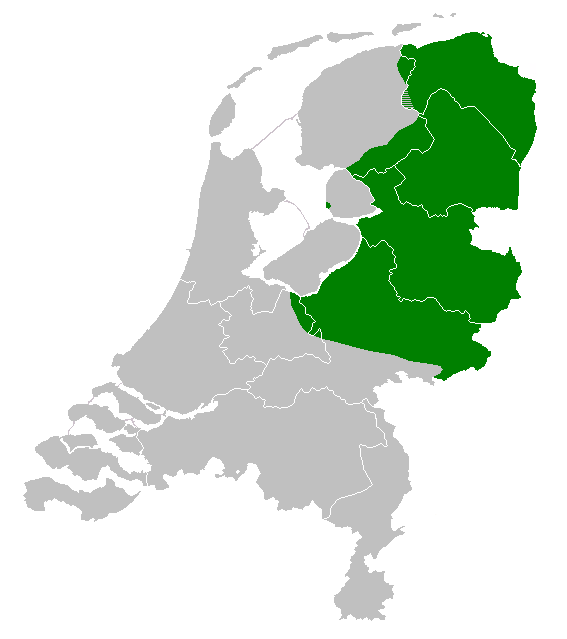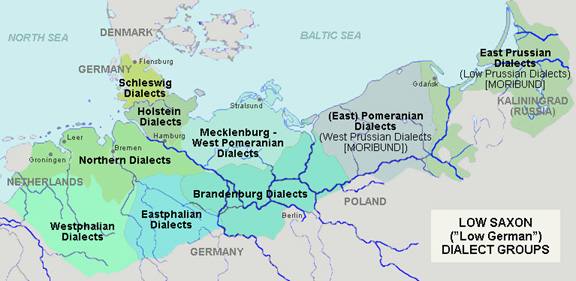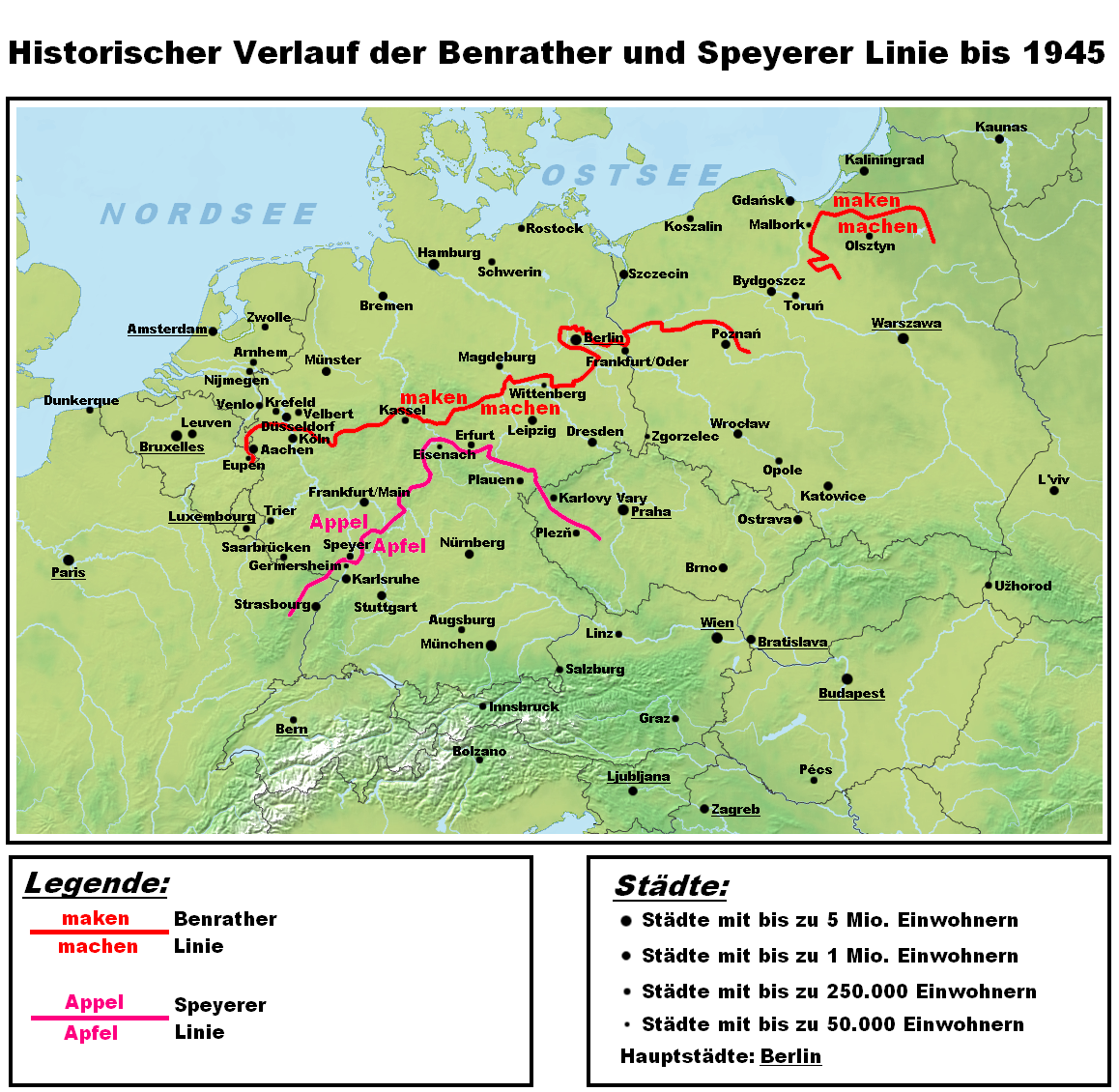|
Low Saxon
Low Saxon (), also known as West Low German () are a group of Low German dialects spoken in parts of the Netherlands, northwestern Germany and southern Denmark (in North Schleswig by parts of the German-speaking minority). It is one of two dialect groups, the other being East Low German. Extent The language area comprises the North German states of Lower Saxony, North Rhine-Westphalia (the Westphalian part), Bremen, Hamburg, Schleswig-Holstein and Saxony-Anhalt (the northwestern areas around Magdeburg) as well as the northeast of the Netherlands (i.e. Dutch Low Saxon, spoken in Groningen, Drenthe, Overijssel, northern Gelderland and Urk) and the Schleswigsch dialect spoken by the North Schleswig Germans in the southernmost part of Denmark. In the south the Benrath line and Uerdingen line isoglosses form the border with the area, where West Central German variants of High German are spoken. List of dialects Germany *West Low German ** Westphalian, including the region a ... [...More Info...] [...Related Items...] OR: [Wikipedia] [Google] [Baidu] |
Low German
Low German is a West Germanic languages, West Germanic language variety, language spoken mainly in Northern Germany and the northeastern Netherlands. The dialect of Plautdietsch is also spoken in the Russian Mennonite diaspora worldwide. "Low" refers to the altitude of the areas where it is typically spoken. Low German is most closely related to Frisian languages, Frisian and English language, English, with which it forms the North Sea Germanic group of the West Germanic languages. Like Dutch language, Dutch, it has historically been spoken north of the Benrath line, Benrath and Uerdingen line, Uerdingen isoglosses, while forms of High German languages, High German (of which Standard German is a standardized example) have historically been spoken south of those lines. Like Frisian, English, Dutch and the North Germanic languages, Low German has not undergone the High German consonant shift, as opposed to Standard German, Standard High German, which is based on High German langu ... [...More Info...] [...Related Items...] OR: [Wikipedia] [Google] [Baidu] |
Germany
Germany, officially the Federal Republic of Germany, is a country in Central Europe. It lies between the Baltic Sea and the North Sea to the north and the Alps to the south. Its sixteen States of Germany, constituent states have a total population of over 84 million in an area of , making it the most populous member state of the European Union. It borders Denmark to the north, Poland and the Czech Republic to the east, Austria and Switzerland to the south, and France, Luxembourg, Belgium, and the Netherlands to the west. The Capital of Germany, nation's capital and List of cities in Germany by population, most populous city is Berlin and its main financial centre is Frankfurt; the largest urban area is the Ruhr. Settlement in the territory of modern Germany began in the Lower Paleolithic, with various tribes inhabiting it from the Neolithic onward, chiefly the Celts. Various Germanic peoples, Germanic tribes have inhabited the northern parts of modern Germany since classical ... [...More Info...] [...Related Items...] OR: [Wikipedia] [Google] [Baidu] |
Magdeburg
Magdeburg (; ) is the Capital city, capital of the Germany, German States of Germany, state Saxony-Anhalt. The city is on the Elbe river. Otto I, Holy Roman Emperor, Otto I, the first Holy Roman Emperor and founder of the Archbishopric of Magdeburg, was buried in the city's Magdeburg Cathedral, cathedral after his death. Magdeburg's version of German town law, known as Magdeburg rights, spread throughout Central Europe, Central and Eastern Europe. In the Late Middle Ages, Magdeburg was one of the largest and most prosperous German cities and a notable member of the Hanseatic League. One of the most notable people from the city was Otto von Guericke, famous for his experiments with the Magdeburg hemispheres. Magdeburg has experienced three major devastations in its history. In 1207 the first catastrophe struck the city, with a fire burning down large parts of the city, including the Magdeburg Cathedral#Previous building, Ottonian cathedral. The Catholic League (German), Catholi ... [...More Info...] [...Related Items...] OR: [Wikipedia] [Google] [Baidu] |
Münster
Münster (; ) is an independent city#Germany, independent city (''Kreisfreie Stadt'') in North Rhine-Westphalia, Germany. It is in the northern part of the state and is considered to be the cultural centre of the Westphalia region. It is also a Münster (region), state district capital. Münster was the location of the Münster Rebellion, Anabaptist rebellion during the Protestant Reformation and the site of the signing of the Treaty of Westphalia ending the Thirty Years' War in 1648. Today, it is known as the bicycle capital of Germany. Münster gained the status of a ''Großstadt'' (major city) with more than 100,000 inhabitants in 1915. , there are 300,000 people living in the city, with about 61,500 students, only some of whom are recorded in the official population statistics as having their primary residence in Münster. Münster is a part of the international EUREGIO, Euregio region with more than 1,000,000 inhabitants (Enschede, Hengelo, Gronau, North Rhine-Westphalia, G ... [...More Info...] [...Related Items...] OR: [Wikipedia] [Google] [Baidu] |
Westphalian Language
Westphalian or Westfalish ( Standard High German: ', Standard Dutch: ') is one of the major dialect groups of Low German. Its most salient feature is its diphthongization (rising diphthongs). For example, speakers say () instead of or for "to eat". (There is also a difference in the use of consonants ''within'' the Westphalian dialects: North of the Wiehengebirge, people tend to use unvoiced consonants, whereas south of the Wiehengebirge they tend to use the voiced equivalents, e.g. > .) The Westphalian dialect region includes the north-eastern part of North Rhine-Westphalia, i.e. the former Prussian province of Westphalia, without Siegerland and Wittgenstein, but including the southern part of former government district Weser-Ems (e.g. the region around Osnabrück and the landscape of Emsland in modern Lower Saxony). Traditionally, all Dutch Low Saxon dialects are considered Westphalian, with the notable exception of Gronings, which is grouped with the Northern Low S ... [...More Info...] [...Related Items...] OR: [Wikipedia] [Google] [Baidu] |
High German Languages
The High German languages (, i.e. ''High German dialects''), or simply High German ( ) – not to be confused with Standard High German which is commonly also called "High German" – comprise the varieties of German spoken south of the Benrath and Uerdingen isoglosses, i.e., in central and southern Germany, Austria, Liechtenstein, Switzerland, Luxembourg, and eastern Belgium, as well as in neighbouring portions of France (Alsace and northern Lorraine), Italy (South Tyrol), the Czech Republic (Bohemia), and Poland ( Upper Silesia). They are also spoken in diasporas in Romania, Russia, Canada, the United States, Brazil, Argentina, Mexico, Chile, and Namibia. High German is marked by the High German consonant shift, separating it from Low German (Low Saxon) and Low Franconian (including Dutch) within the continental West Germanic dialect continuum. "Low" and "high" refer to the lowland and highland geographies typically found in the two areas. Classification As a technica ... [...More Info...] [...Related Items...] OR: [Wikipedia] [Google] [Baidu] |
West Central German
West Central German () belongs to the Central German, Central, High German languages, High German dialect family of German language, German. It includes the following sub-families: * Central Franconian () ** Ripuarian language, Ripuarian (), spoken in North Rhine-Westphalia (including ) and German-speaking Community of Belgium, German-speaking Belgium and a small edge of the south of the Limburg (Netherlands), Dutch province of Limbourg. ** Moselle Franconian dialects, Moselle Franconian (; ) in Rhineland-Palatinate, Saarland and France *** Luxembourgish language, Luxembourgish (; ; or ) in Luxembourg, Belgium and France *** Hunsrik (), spoken in Brazil and derived from the dialect of Moselle Franconian * Rhine Franconian dialects, Rhine Franconian (; ) ** Palatine German language, Palatinate Franconian (; ), spoken in Rhineland-Palatinate *** Lorraine Franconian (; ) in the French region of Lorraine *** Bukovina Germans, Bukovina German () in Bukovina (extinct) *** Pennsylvani ... [...More Info...] [...Related Items...] OR: [Wikipedia] [Google] [Baidu] |
Uerdingen Line
The Uerdingen Line (, ; named after Uerdingen by Georg Wenker) is the isogloss within West Germanic languages that separates dialects which preserve the ''-k'' sound in the first person singular pronoun word "ik" (north of the line) from dialects where the word-final ''-k'' has changed to word final ''-ch'' in the word "ich" (IPA ) (south of the line). This sound shift is the one that progressed the furthest north among the consonant shifts which characterize High German and Middle German dialects. The line passes through Belgium, the Netherlands, and Germany. North of the line Low German and Dutch language, Dutch are spoken. South of the line Central German is spoken. In the area between the Uerdingen line and the Benrath line to its south, which includes parts of Belgium and the Netherlands, the Germanic dialect Limburgish is spoken. In eastern Germany, the regional languages have been largely replaced by standard German language, German since the 20th century. The western en ... [...More Info...] [...Related Items...] OR: [Wikipedia] [Google] [Baidu] |
Benrath Line
In German linguistics, the Benrath line () is the isogloss: dialects north of the line have the original in (to make), while those to the south have the innovative (). The line runs from Aachen in the west via Benrath (south of Düsseldorf) to eastern Germany near Frankfurt an der Oder in the area of Berlin and Dessau and through former East Prussia dividing Low Prussian dialect and High Prussian dialect. It is called Benrath line because Benrath is the place where it crosses the Rhine. The High German consonant shift (3rd to 9th centuries AD), in which the (northern) Low German dialects for the most part did not participate, affected the southern varieties of the West Germanic dialect continuum. This shift is traditionally seen to distinguish the High German varieties from the other West Germanic languages The West Germanic languages constitute the largest of the three branches of the Germanic languages, Germanic family of languages (the others being the North German ... [...More Info...] [...Related Items...] OR: [Wikipedia] [Google] [Baidu] |
North Schleswig Germans
Approximately 15,000 people in Denmark belong to an autochthonous ethnic German minority traditionally referred to as ''hjemmetyskere'', meaning "Home Germans" in Danish, and as ''Nordschleswiger'' in German. They are Danish citizens and most self-identify as ethnic Germans. They generally speak Low Saxon and South Jutlandic Danish as their home languages. Unrelatedly to the North Schleswig Germans, there are also a substantial number of citizens of Germany who live in Denmark under the aegis of the Schengen Area and have no connection to the historical German inhabitants of the Duchy of Schleswig. History In 1920, in the aftermath of World War I, two Schleswig Plebiscites were held in the northernmost part of the Prussian Province of Schleswig-Holstein (the northern half of the former Duchy of Schleswig). The plebiscites were held in two zones that were defined by Denmark according to the ideas of the Danish historian Hans Victor Clausen. The northern Zone I wa ... [...More Info...] [...Related Items...] OR: [Wikipedia] [Google] [Baidu] |
Schleswigsch Dialect
Northern Low Saxon (in Standard High German: ', also ', lit. ''North(ern) Low Saxon/German''; in Standard Dutch: ') is a subgroup of Low Saxon dialects of Low German. As such, it covers a great part of the West Low German-speaking areas of northern Germany, with the exception of the border regions where South Low Saxon ( Eastphalian and Westphalian) is spoken, and Gronings dialect in the Netherlands. Dialects Northern Low Saxon can be divided into Holsteinian (), Schleswigian (), East Frisian Low Saxon, Dithmarsch (), North Hanoveranian (), Emslandish (), and Oldenburgish () in Germany, with additional dialects in the Netherlands such as Gronings. ' is spoken in Holstein, the southern part of Schleswig-Holstein in Germany, in Dithmarschen, around Neumünster, Rendsburg, Kiel and Lübeck. ' () is spoken in Schleswig, which is divided between Germany and Denmark. It is mainly based on a South Jutlandic substrate. Therefore, it has some notable differences in pronunciation an ... [...More Info...] [...Related Items...] OR: [Wikipedia] [Google] [Baidu] |
Gelderland
Gelderland ( , ), also known as Guelders ( ) in English, is a Provinces of the Netherlands, province of the Netherlands, located in the centre-east of the country. With a total area of of which is water, it is the largest province of the Netherlands by land area, and second by total area. Gelderland shares borders with six other provinces (Flevoland, Limburg (Netherlands), Limburg, North Brabant, Overijssel, South Holland and Utrecht (province), Utrecht) and the Germany, German state of North Rhine-Westphalia. The capital is Arnhem (pop. 159,265); however, Nijmegen (pop. 176,731) and Apeldoorn (pop. 162,445) are both larger municipalities. Other major regional centres in Gelderland are Ede, Netherlands, Ede, Doetinchem, Zutphen, Harderwijk, Tiel, Wageningen, Zevenaar, and Winterswijk. Gelderland had a population of about 2,134,000 as of January 2023. It contains the Netherlands's largest forest region (the Veluwe), the Rhine and other major rivers, and a significant amount of o ... [...More Info...] [...Related Items...] OR: [Wikipedia] [Google] [Baidu] |




